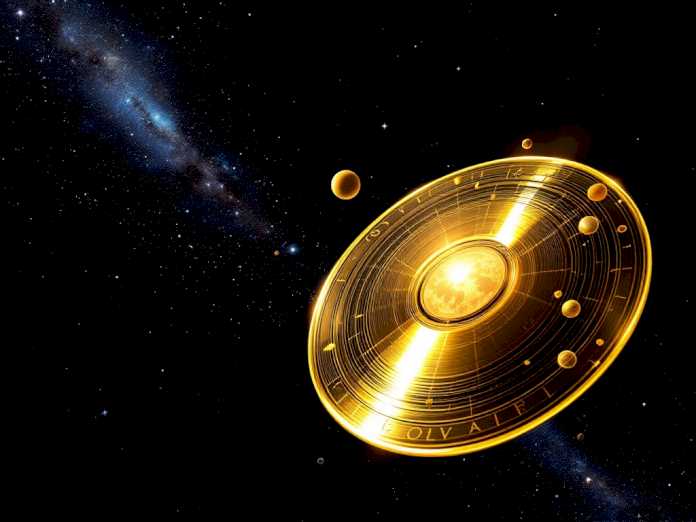Voyager’s Golden Record Message to Cosmos
Voyager’s Golden Record Message to Cosmos :Are we alone in this vast universe? The quest for extraterrestrial life has intrigued humans for centuries. With advancements in exploration, we have taken steps to reach out to potential intelligent beings beyond our planet. Central to these efforts are the Voyager missions, which not only aimed to explore our solar system but also carried messages intended for any life forms that might find them. This blog post delves into the significance of the Voyager missions and the contents of the Golden Record, humanity’s ambitious attempt to communicate across the cosmos.
The Voyager Missions – A Journey to Interstellar Space
The Grand Tour | Voyager’s Golden Record Message to Cosmos
In the 1970s, a unique alignment of Jupiter, Saturn, Uranus, and Neptune presented a rare opportunity. This geometric setup, which occurs once every 175 years, allowed NASA to launch two spacecraft that could use the gravitational pull of these planets for a technique known as gravity assist. This maneuver would enable them to traverse the solar system with minimal fuel.

Voyager 1 and 2 | Voyager’s Golden Record Message to Cosmos
Launch Dates:
- Voyager 2 launched on August 20, 1977.
- Voyager 1 followed on September 5, 1977.
Key Discoveries:
- Voyager 1 made history by sending back the first detailed images of Jupiter and its moons in March 1979. It also discovered Jupiter’s rings, debunking the myth that only Saturn had them.
- Voyager 2 closely studied Jupiter and made the first-ever close-up observations of Uranus in 1986 and Neptune in 1989.
Throughout their journeys, both spacecraft revealed astonishing findings, such as the volcanic activity on Jupiter’s moon, Io, and the intricate ring systems surrounding gas giants.
Reaching Interstellar Space
Voyager 1 first crossed the Heliopause, the boundary marking the end of the Sun’s influence, on August 25, 2012. Voyager 2 followed suit six years later, entering interstellar space on November 5, 2018. This marked a monumental achievement as these are the only two human-made objects to venture into this uncharted territory.
The Pioneer Plaques – Humanity’s First Interstellar Message
Before the Voyager missions, NASA launched the Pioneer 10 and 11 spacecraft, which were also designed to convey messages to extraterrestrial life.
Design and Contents
The Pioneer plaques are simple aluminum plates featuring:
- Dimensions: 15 cm by 23 cm.
- Diagrams outlining humans’ location in the galaxy.
- Images of a man and a woman, aiming to represent humanity.
Limitations
While the plaques were a noble first attempt, they lacked detail and complexity. The information conveyed was basic, restricting its effectiveness as a form of communication.
Significance
Despite their simplicity, the Pioneer plaques marked humanity’s initial efforts to reach out to the wider universe. They served as a precursor to the more detailed messages carried by the Voyager spacecraft.
The Golden Record – A More Ambitious Message
The Golden Record captures humanity’s essence and our desire to connect with others.
Format and Technology | Voyager’s Golden Record Message to Cosmos
The Golden Record is a 12-inch gold-plated copper disc. One of the biggest challenges was storing images on an analog format. NASA ingeniously converted still images into audio signals to fit this limitation.
Contents
The Golden Record contains four sections:
- Scenes from Earth:
- Features 115 images and diagrams showcasing life on our planet, including representations of humans and various natural phenomena.
- Greetings from Earth:
- Contains spoken greetings in 55 languages, including a message from U.S. President Jimmy Carter and U.N. Secretary-General Kurt Waldheim.
- Music from Earth:
- Presents musical selections from diverse cultures, including classical compositions and folk music. Notably, it includes an Indian song based on Raag Bhairavi.
- Sounds of Earth:
- Consists of 21 audio recordings, capturing sounds from nature and human activities, offering a glimpse of our planet’s rich audio landscape.
Instructions for Playback
Accompanying the Golden Record are diagrams intended to guide any extraterrestrial intelligence in operating the phonograph. However, these instructions pose potential challenges. The complexity of the diagrams may not be immediately understandable to beings unfamiliar with our technology.
Decoding the Message – Challenges and Possibilities
Technological Requirements
To decode the Golden Record, advanced knowledge in technology and science is necessary. Understanding the interaction of audio and visual data would be a significant hurdle for other intelligences.
Cultural Understanding
Cultural differences could create further barriers. The context behind our expressions, music, and images may not translate across vastly different civilizations.
Long-Term Preservation
Made to last, the Golden Record is designed for durability, but its ultimate survival remains uncertain. It is possible that the record could exist for millennia, waiting for someone to discover it.
The Future of Interstellar Communication
Voyager’s Legacy
The legacy of the Voyager missions continues to shape our understanding of the solar system and the potential for intelligent life beyond Earth.
Lessons Learned
The successes and challenges of the Voyager and Pioneer missions provide valuable insights into interstellar communication, highlighting the importance of clarity and complexity.
Future Missions
Looking ahead, the potential for future missions may benefit from advancements in technology and a deeper understanding of how to communicate with extraterrestrial intelligences effectively.
Conclusion
The Voyager missions and the Golden Record symbolize humanity’s curiosity and desire to connect with other intelligent life in the universe. While the challenges of interstellar communication are significant, the stories of these missions inspire ongoing exploration and understanding of our place in the cosmos. Will we ever receive a response? As we continue to explore the stars, the mystery remains alive. What do you believe lies beyond our solar system?
